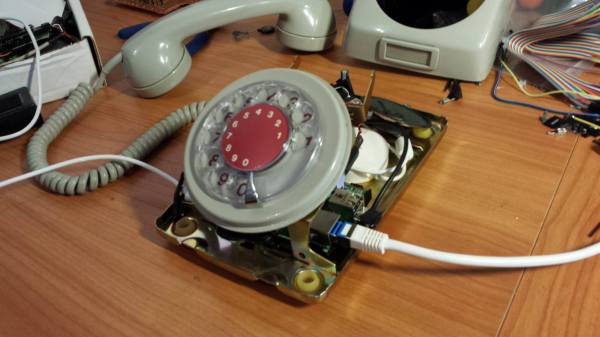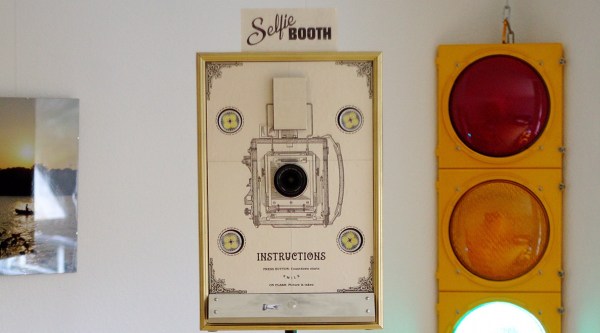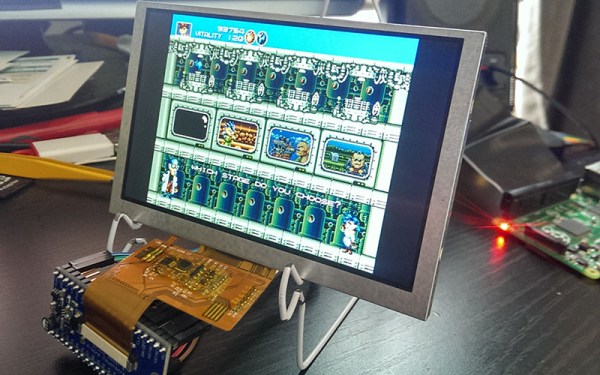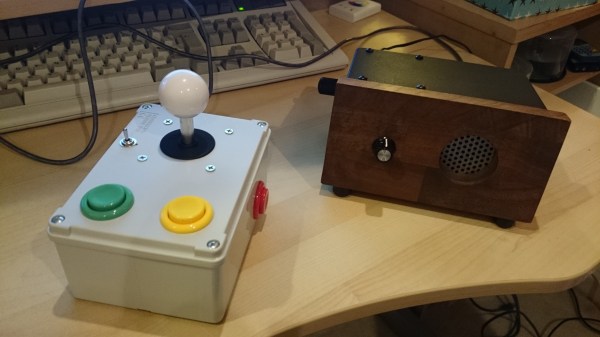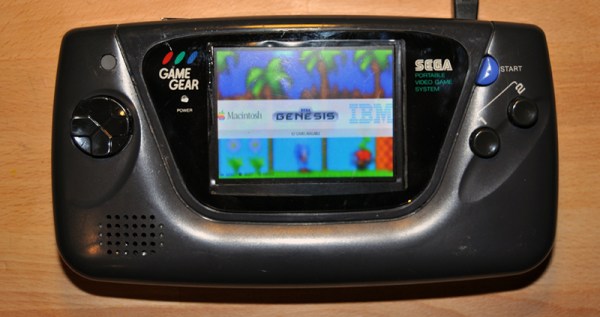[Oscar] really likes the PDP-8s, with the extremely old school PDP-8/I being his favorite. If you haven’t checked the price on these recently, getting a real PDP-8/I is nigh impossible. However, after assembling a KIM-1 clone kit, an idea struck: what about building a modern PDP-8/I replica that looks like the real thing, but is powered by modern hardware. This would be fairly cheap to build, and has the added bonus of not weighing several hundred pounds.
The PiDP-8 is [Oscar]’s project to replicate the hardware of the 8/I in a modern format. Instead of hundreds of Flip Chips, this PDP-8 is powered by a Raspberry Pi running the SIMH emulator. The 40-pin GPIO connector on the Pi is broken out to 92 LEDs and 26 toggle switches on a large PCB. This setup gets [Oscar] a reasonable facsimile of the PDP-8/I, but he’s also going for looks too. He created an acrylic panel with artwork copied from an original 8/I that mounts to the PCB and gives the entire project that beautiful late 60s / early 70s brown with harvest gold accent color scheme.
Since this emulated PDP-8/I is running on entirely new hardware, it doesn’t make much sense to haul out disk drives as big as a small child, tape drives, and paper tape readers. Instead, [Oscar] is putting everything on USB sticks. It’s a great solution to the problem of moving around files that are a few kilowords in size.
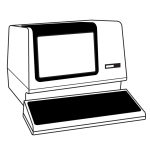 [Oscar] says he’ll be bringing his PiDP to the Vintage Computer Festival East X in Wall, NJ, April 17-19. We’ll be there, and I’ve already offered [Oscar] the use of a VT-100 terminal. If you’re in the area, you should come to this event. It’s guaranteed to be an awesome event and you’re sure to have a great time. Since this is the 50th anniversary of the introduction of the PDP-8, there will be a half-dozen original PDP-8s set up, including a newly refurbished Straight-8 that came out of the RESISTORS.
[Oscar] says he’ll be bringing his PiDP to the Vintage Computer Festival East X in Wall, NJ, April 17-19. We’ll be there, and I’ve already offered [Oscar] the use of a VT-100 terminal. If you’re in the area, you should come to this event. It’s guaranteed to be an awesome event and you’re sure to have a great time. Since this is the 50th anniversary of the introduction of the PDP-8, there will be a half-dozen original PDP-8s set up, including a newly refurbished Straight-8 that came out of the RESISTORS.
Oh, if anyone knows how to connect a Pi to a VT100 (technically a 103), leave a note in the comments. Does it need the RTS/CTS?


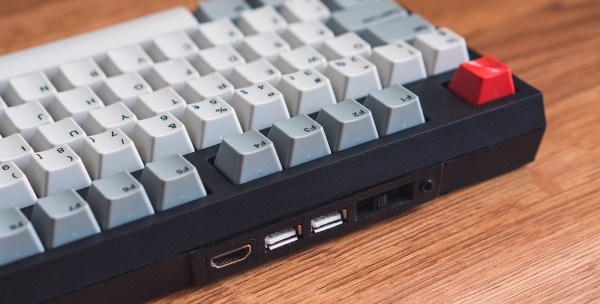
 If you are familiar with the Raspberry Pi 2 Model B, you know that all of the connections are not on the same side of the board. The USB, audio, HDMI and Ethernet jacks were removed from the PCB. The Ethernet port is not needed since this hack uses WiFi, but those those other ports were extended and terminated in a custom 3D printed I/O panel . The stock keyboard case had to be cut to fit the new panel which results in a very clean finished look.
If you are familiar with the Raspberry Pi 2 Model B, you know that all of the connections are not on the same side of the board. The USB, audio, HDMI and Ethernet jacks were removed from the PCB. The Ethernet port is not needed since this hack uses WiFi, but those those other ports were extended and terminated in a custom 3D printed I/O panel . The stock keyboard case had to be cut to fit the new panel which results in a very clean finished look.